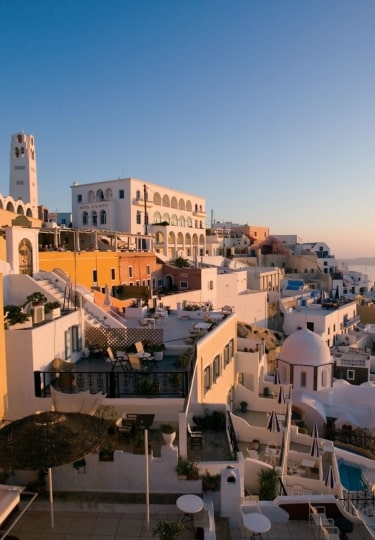Cities in Greece, while distinct from the country’s iconic rocky islands and vast beaches, offer a unique glimpse into a nation steeped in ancient history and cultural richness.
Often overshadowed by the allure of its Mediterranean beaches, Greece’s urban centers are as much a part of its charm as its coastal retreats.
Greece’s cities are must-visit destinations in their own right, from the smallest of capitals on the Greek Islands to vibrant hotbeds of culture such as Athens and Thessaloniki.
Athens
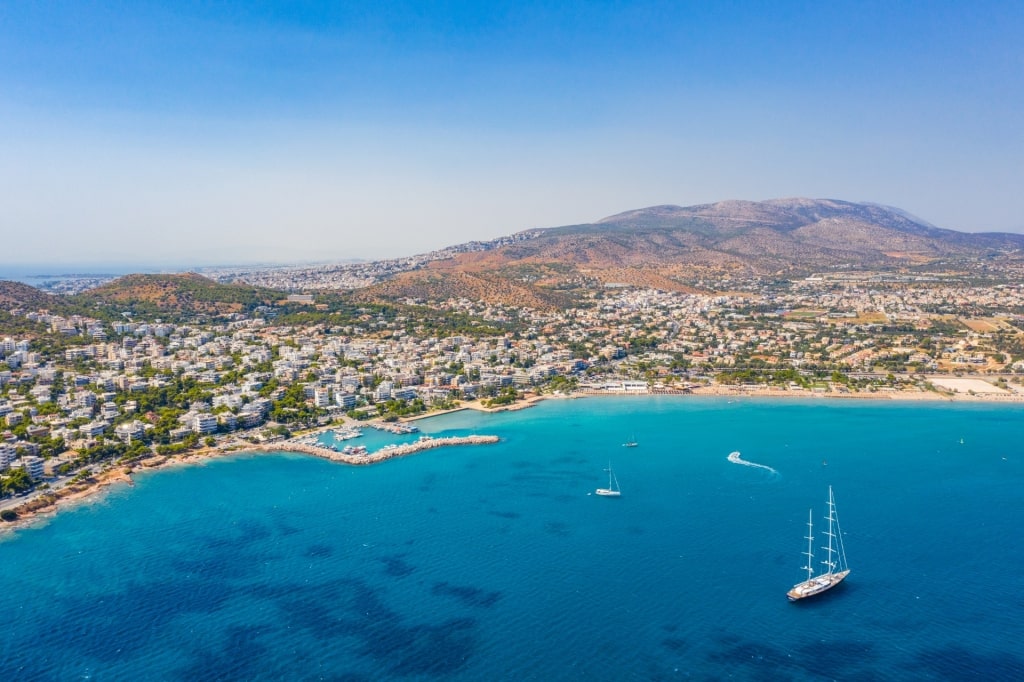
Athens
Surrounded by towering mountains and stretching for more than 30 miles along the Athenian Riviera, Athens is a sprawling, modern city, but its downtown area remains pleasingly compact.
Dominated by the Acropolis, all its key sights are within a short distance of this central highlight. The iconic Parthenon, Hadrian’s Arch and the site of the first modern Olympics at the all-marble Panathenaic Stadium can all be reached easily on foot.
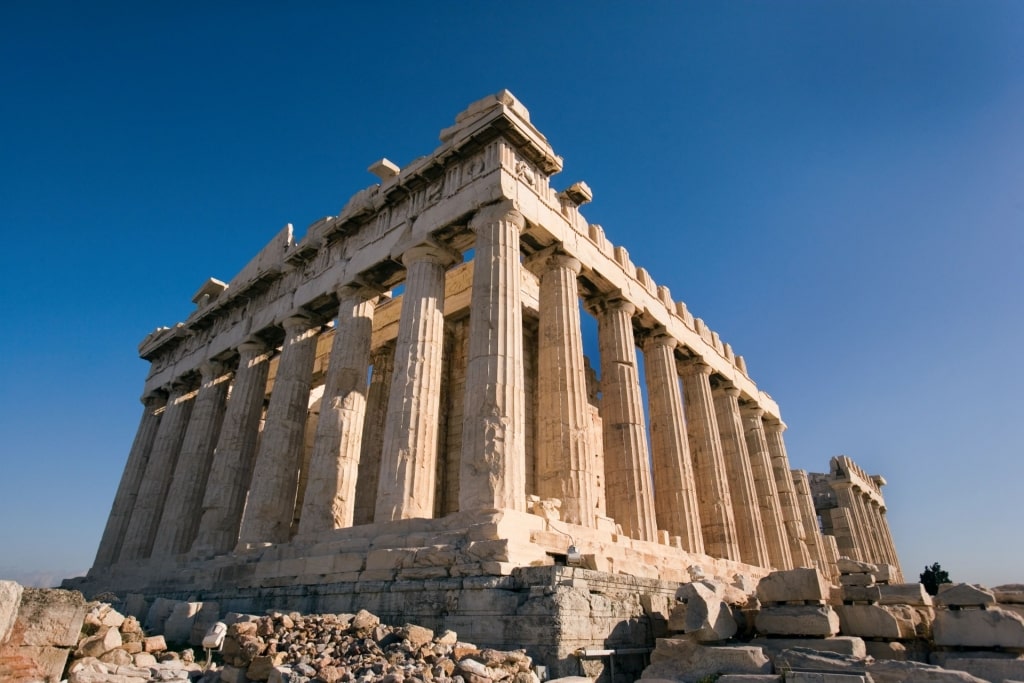
Parthenon, Athens
Likewise, the flea market at Monastiraki, the high-end shopping of Ermou Street, and the Parliament buildings on Constitution Square.
Hip neighborhoods in Athens such as Psiri and Thisseio, packed with neoclassical homes turned into stylish bars and eateries, abound. And if the weather is too hot to handle, the seaside suburbs such as Glyfada are a short cab ride away.
Thessaloniki
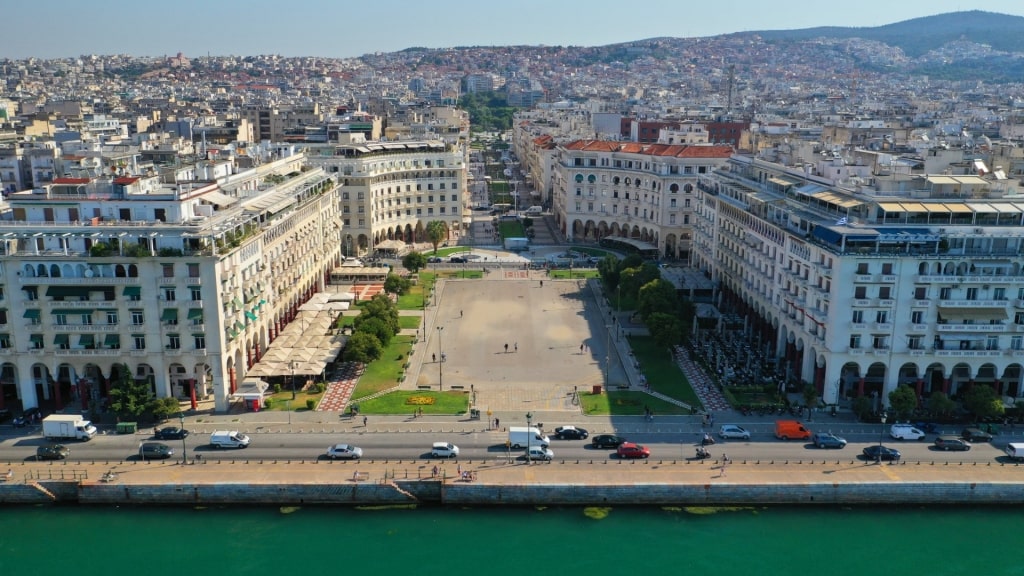
Thessaloniki
Thessaloniki, the capital of the north, is one of the most popular cities in Greece. Sitting on a natural bay overlooking the Thermaic Gulf, the center of Macedonian life offers an incredible blend of the ancient and modern, as well as the best foodie scene in the country.
Ano Poli—the old town—sits a steep hike (or easy cab ride) from the ocean and affords incredible views over the northern Aegean from its crumbling walls. Its winding streets, lined with tavernas and bars, beg to be explored.
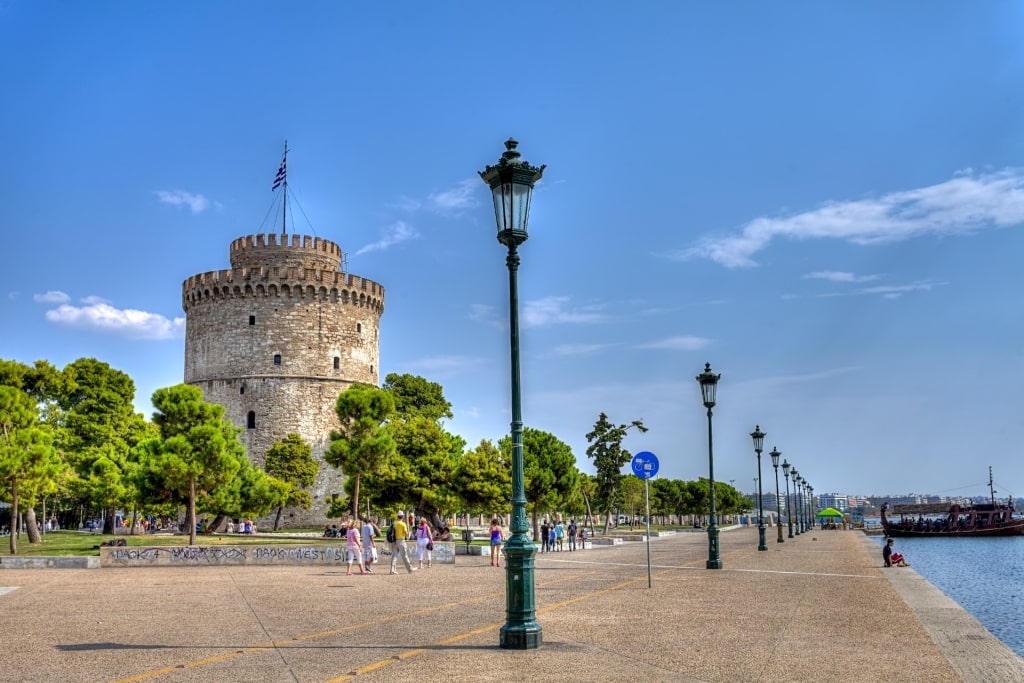
White Tower, Thessaloniki
Back by the ocean, the seafront is dominated by the city’s symbol, the iconic White Tower, while the Kapani and Modiano markets showcase Macedonia’s local foods and drinks.
The city’s waterfront deserves some time too, thanks to a long promenade through various parks and Thessaloniki’s beaches in the Kalamaria neighborhood.
Read: Tips for Visiting Greece for the First Time
Piraeus
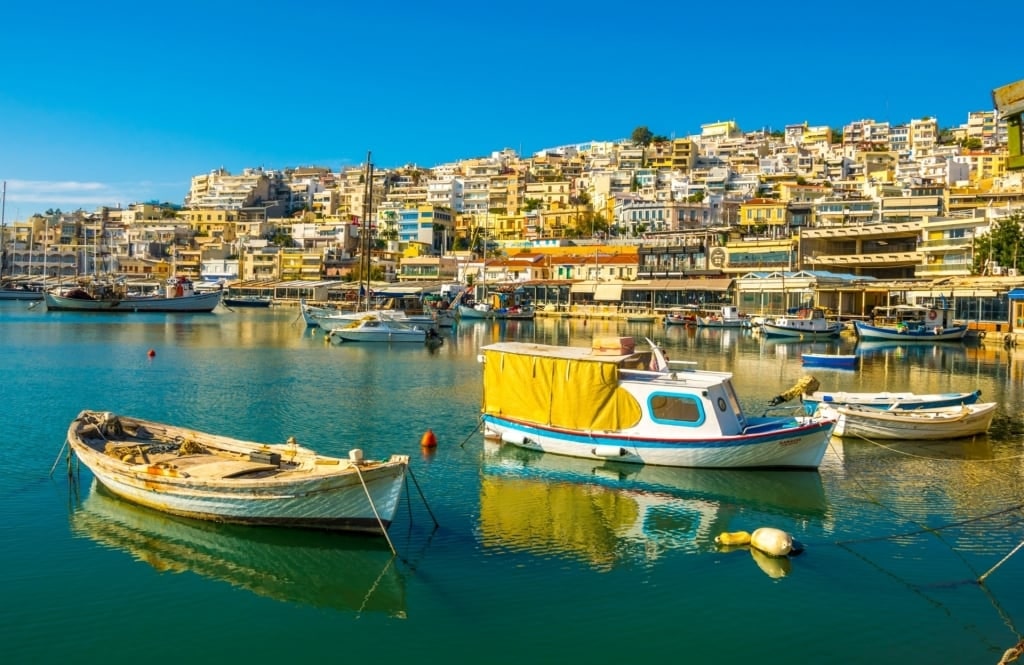
Piraeus
It’s easy to think Piraeus and Athens are one contiguous metropolitan area, but it’s not wise to make such a claim to a local in either of these neighboring cities.
The fierce rivalry between the two is no more pronounced than on the soccer field, where Olympiakos Piraeus and the two main Athenian clubs of AEK Athens and Panathinaikos are arch-enemies.
Like any major port, Piraeus is a hit on the senses: big, bustling and chaotic, but step away from the docks and there is much to enjoy.
The Hellenic Maritime Museum highlights Greece’s historic importance as a naval power, while the Archaeological Museum of Piraeus offers some fine bronze statues.
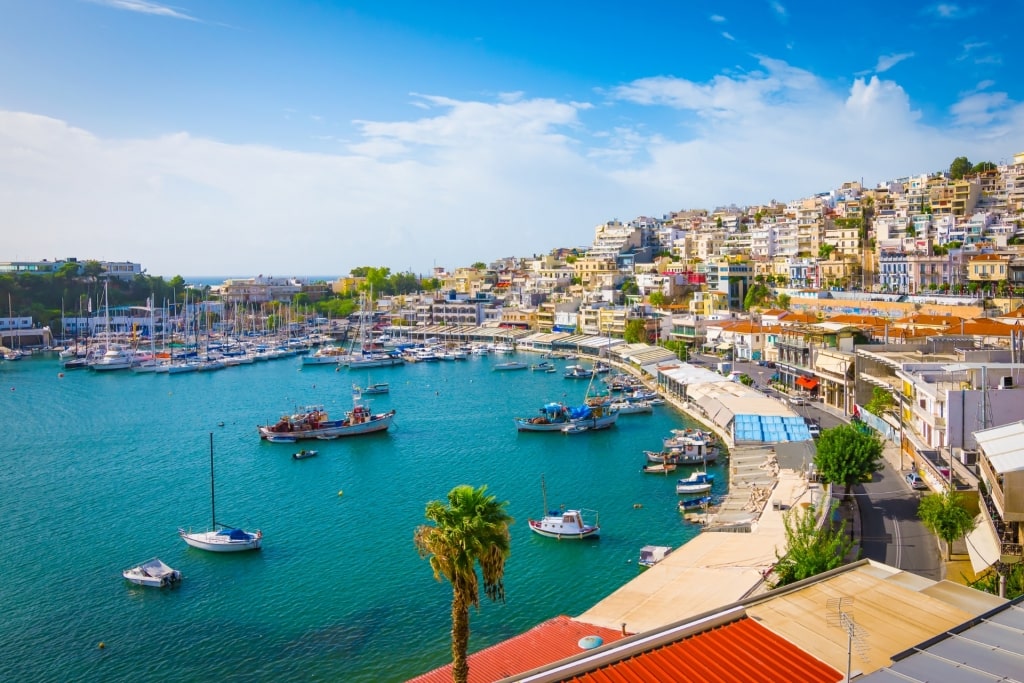
Mikrolimano, Piraeus
Nowhere could contrast more with the rest of the city though than Mikrolimano, a small, natural harbor now home to plush yachts, and restaurants offering incredible seafood. Spend time here and you could easily imagine yourself to be on one of the islands.
Hydra Town
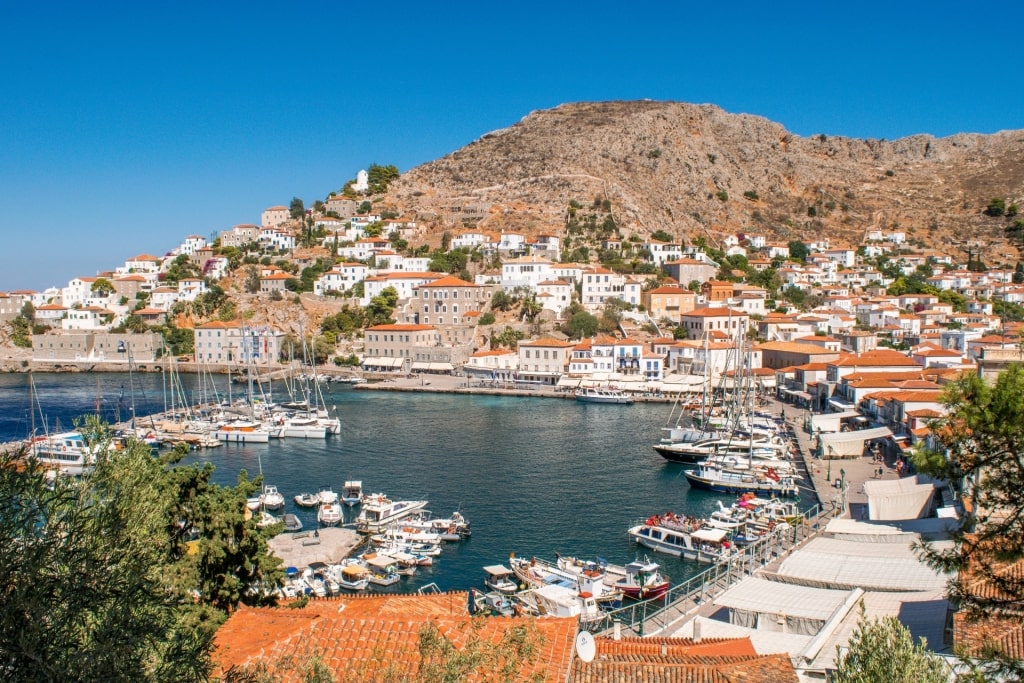
Hydra Town
The tiny island of Hydra, just a short hop from Athens and just off the coast of the Peloponnese, is surely one of the most beautiful spots in the Aegean. It’s car-free, so a visit here is a little like a step back in time where the only transport around the island is by donkey, on foot, or around the coast on speed boat.
The port, home to the Old Town and a celebrity hideout, is an almost perfectly crescent-shaped harbor with neoclassical mansions lining its narrow alleys.
Once the homes of local rich and powerful sea captains in the 19th century, many of these have been converted into elegant guesthouses, cafés, and restaurants.
Lamia
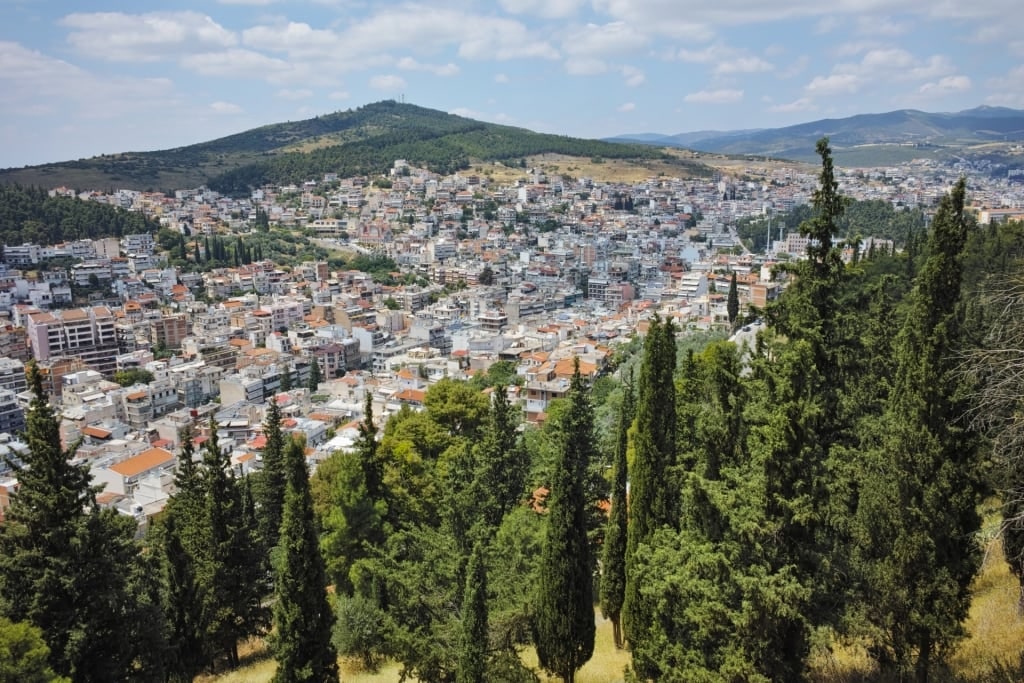
Lamia
For a city that takes its name from the mythical child-eating daughter of Zeus, Lamia is surely one of the most intriguing cities in Greece, sitting in the middle of the country in the foothills of Mount Othrys.
The downtown area centers around Lamia Castle. This medieval citadel sits on a hill that dominates the skyline and offers panoramic views of the city below.
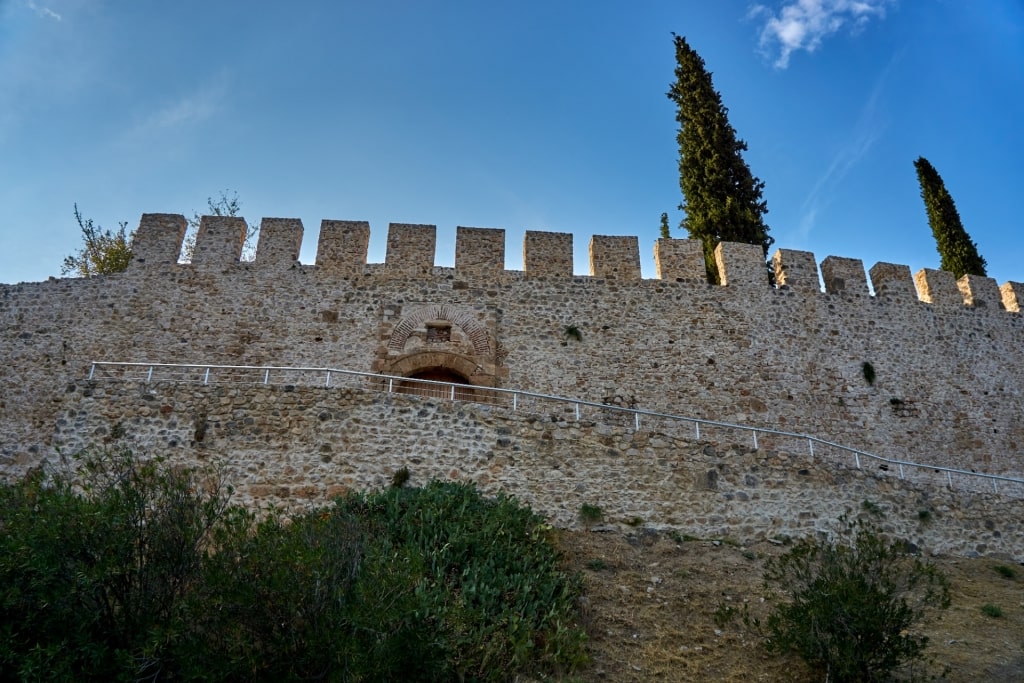
Lamia Castle
Here one can find elegant squares and the imposing local government seat, the Mansion of the Central Greece Administration. Look for statues of local heroes such as Athanasios Diakos, a hero of the War of Independence.
A short drive away is Thermopylae, the site of the legendary battle that pitched 300 Spartans under King Leonidas against invading Persian armies in 480 BC.
Rhodes Old Town
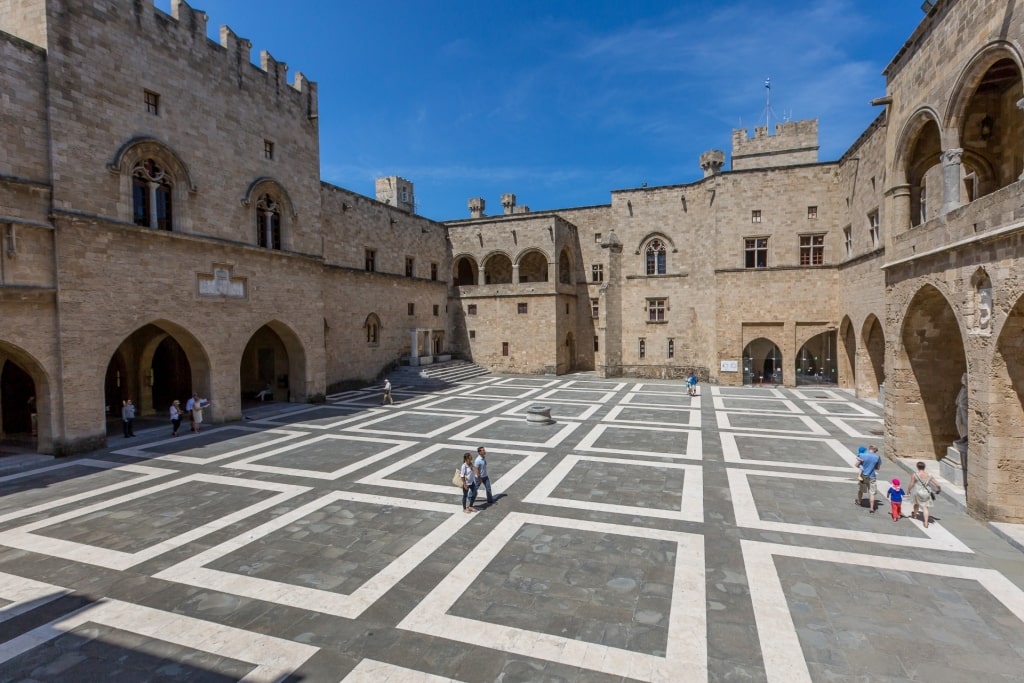
Palace of the Grand Masters, Old Town Rhodes
A walk through the Old Town of Rhodes, said to be the largest occupied medieval city in Europe, feels akin to strolling through a film set.
The incredible architecture is a legacy of Rhodes Town being the seat of the Crusader Knights Hospitaller after they left Jerusalem in the early 14th century.
Ruling the island for some 200 years, the knights left behind an amazing citadel (the Upper Town) dominated by the Palace of the Grand Masters, the Great Hospital and the Street of the Knights.
The adjacent Lower Town, meanwhile, takes their legacy and builds on it to showcase a blend of Gothic architecture alongside mosques and public baths that date from the Ottoman period that followed.
Fira, Santorini
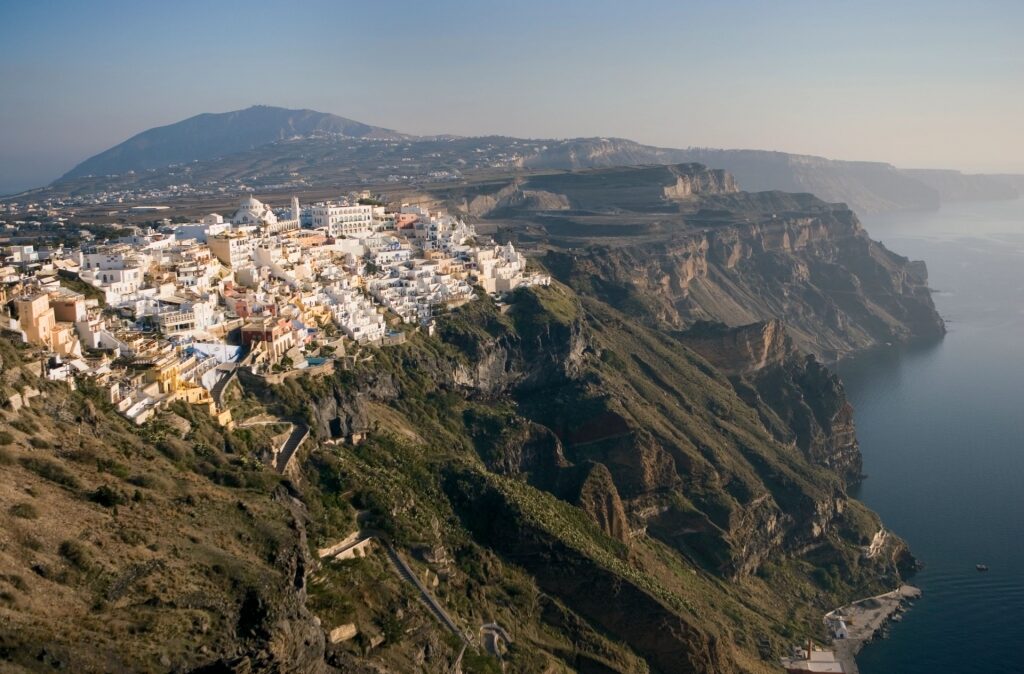
Fira, Santorini
Anyone who has gazed longingly at pictures of the Greek Islands will surely have seen incredible images of Santorini, where the terraces of whitewashed buildings are home to infinity pools that seemingly fall off a cliff to a hazy Mediterranean below.
Well, hold the photo-editing tools, because there’s no need for fancy filters; that is exactly what the island capital, Fira, looks like.
Clinging to the edge of a volcanic caldera, those buildings on the cliffs seem to tumble down the rocks to the sea below, while offering incredible views of two steaming lava islands.
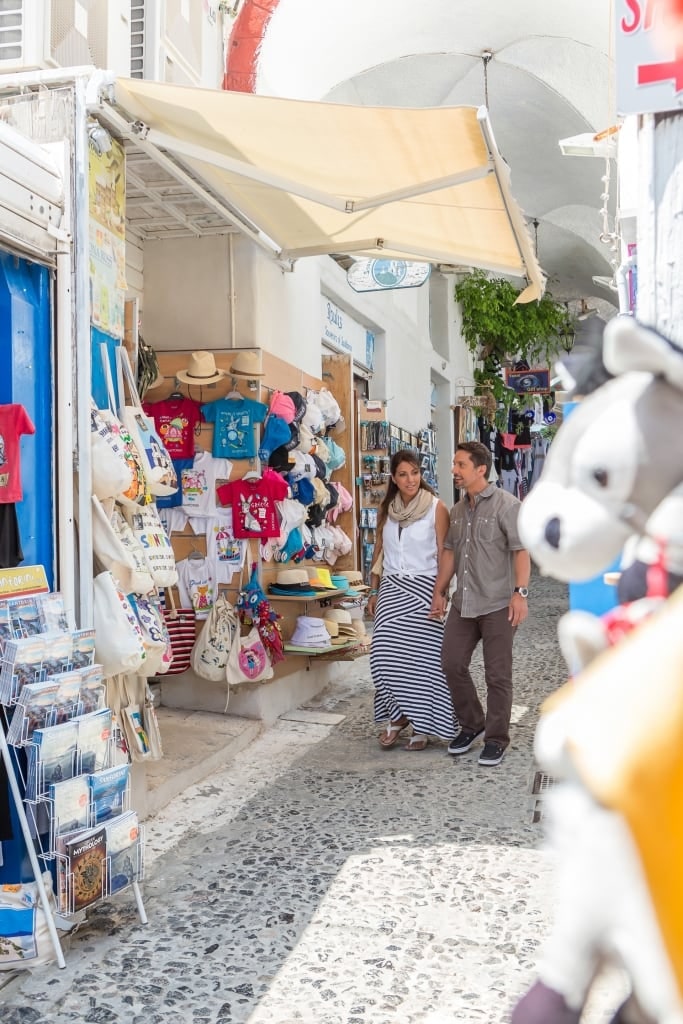
Fira, Santorini
The winding streets behind the front-line view are no less impressive; a maze of narrow alleys lined with high-end jewelers, hip bars, and elegant restaurants offering Greek specialties and fine Santorini wines.
Volos
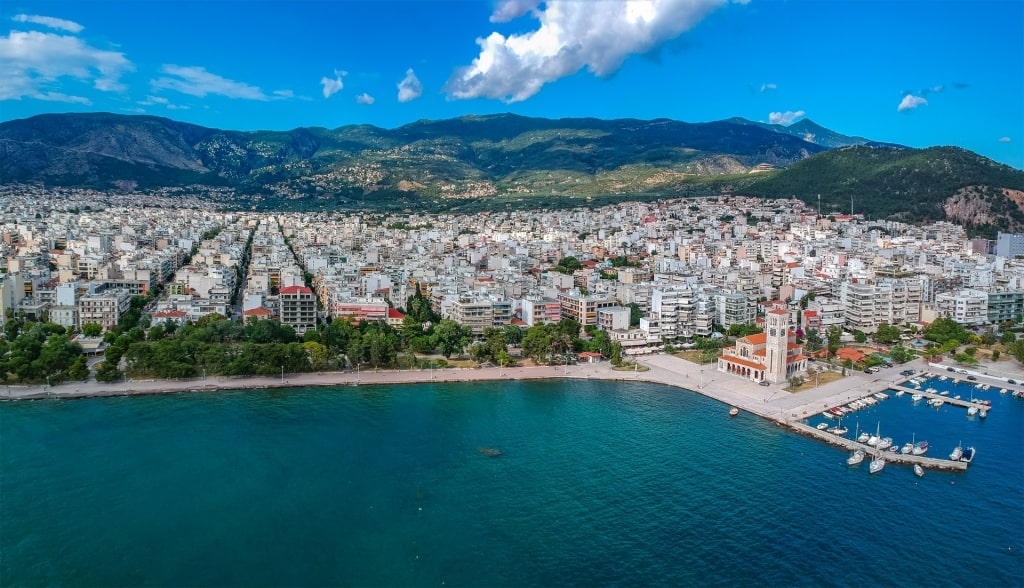
Volos
Capital of the Thessaly region and one of Greece’s most important port cities, Volos lies on the shores of the Pagasetic Gulf and in the shadows of majestic Mount Pelion.
The main parts of the city were sadly razed to the ground in a 1955 earthquake but tragic circumstances led to the opportunity of a huge rebuilding and revitalisation project.
The downtown area is now dominated by fine buildings in the neoclassical style and restored historic mansions, while Volos’ flourishing status as a university city means a youthful buzz pervades.
Areas that deserve to be explored include the vibrant harborside, St. Konstantinos Park, and city beaches such as Anavros. If time allows, taking the train to the handsome inland villages of Mount Pelion should not be missed.
Chania
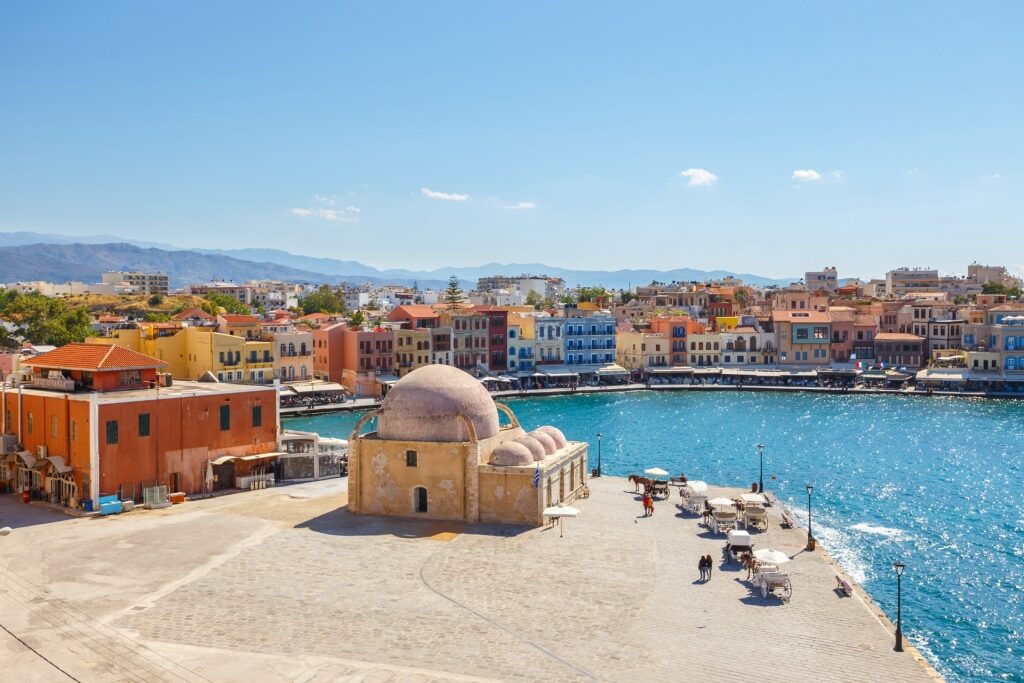
Chania
Another of the Greek Islands’ movie-set locations, Chania sits on a natural bay on the northeastern coast of Crete.
The big draw here is the Venetian-era harbor which breaks from the norm of typical whitewashed buildings with elegant, pastel-colored mansions lining the shore. It’s a perfect spot to sit, relax, and gaze over the traditional fishing boats with a glass of ouzo and a meze.
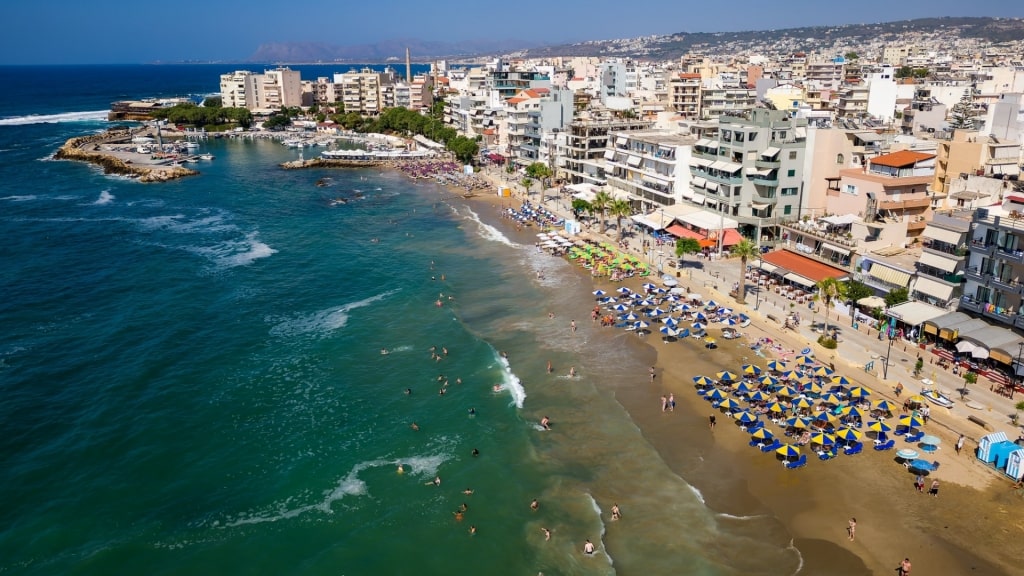
Nea Chora, Chania
Out of the town itself, there are fine Crete beaches such as those at Nea Chora, while the city provides a gateway to the island’s majestic White Mountains, a vast range of towering peaks and deep ravines with excellent hiking opportunities.
Chora, Mykonos
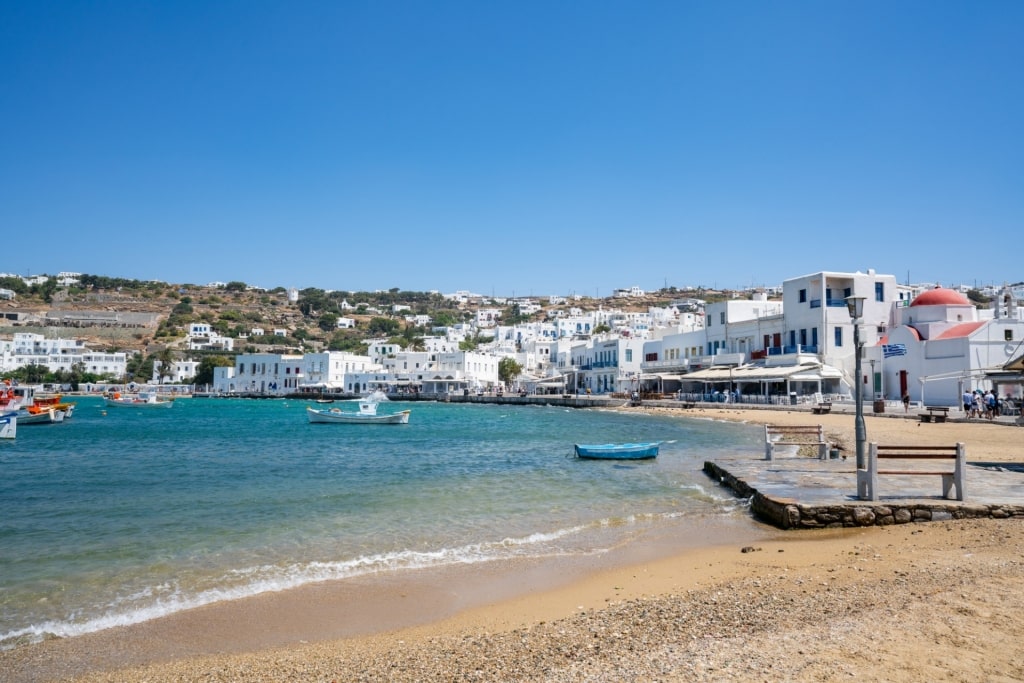
Chora, Mykonos
Mykonos is famed as a cool party island to rival Spain’s Ibiza and its pretty capital, Chora, also known as Mykonos Town, is a joy to wander around.
Chora sits on the island’s harbor, backed by a warren of winding streets lined with high-end boutiques, quaint restaurants, hip bars, and buzzing nightclubs.
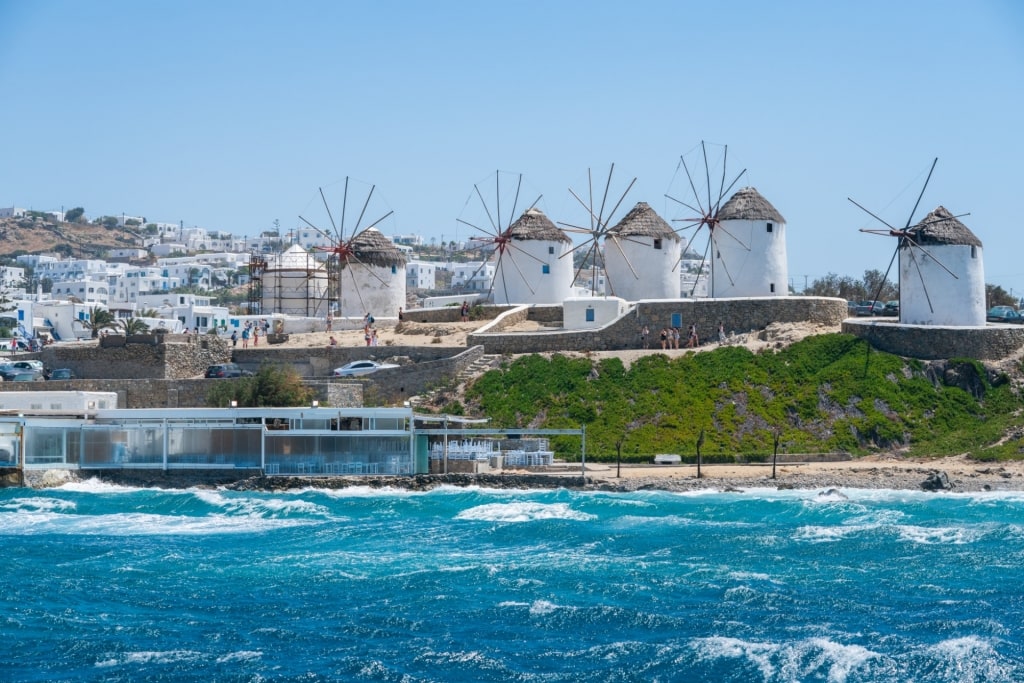
Windmills of Chora, Mykonos
To the south is the quaint Little Venice district, a welcome, calming respite from the town itself, where former fishermen’s houses have become inviting bars, directly on the waterfront.
One of the best things to do in Mykonos is to admire Chora’s iconic windmills, also built by the Venetians. Boats can be taken from here to the beaches of the south coast, and to the neighboring island of Delos with its amazing ruins.
Katakolon
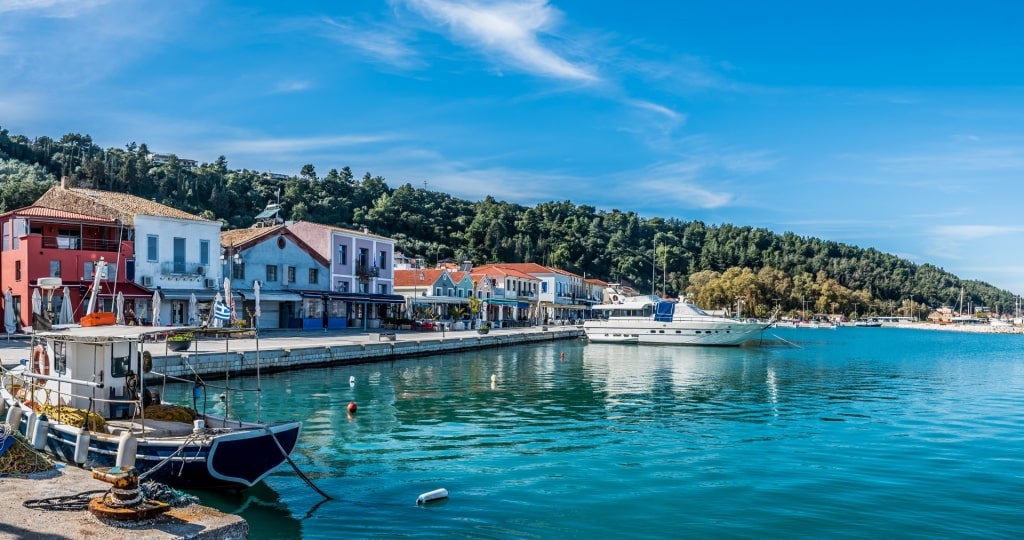
Katakolon
Katakolon in the northwest Peloponnese provides the gateway to the ancient site of Olympia, the birthplace of the Olympic Games, and the largely agricultural province of Ilia.
Despite its small size, it remains one of the most popular cities in Greece for visitors, with Olympia the star attraction.
While most come here for the regional history, there is much else to explore, both in the city itself, where there is a pretty port backed by beautiful pine forests, and a series of beaches that stretch north and south from the town.
Kavala
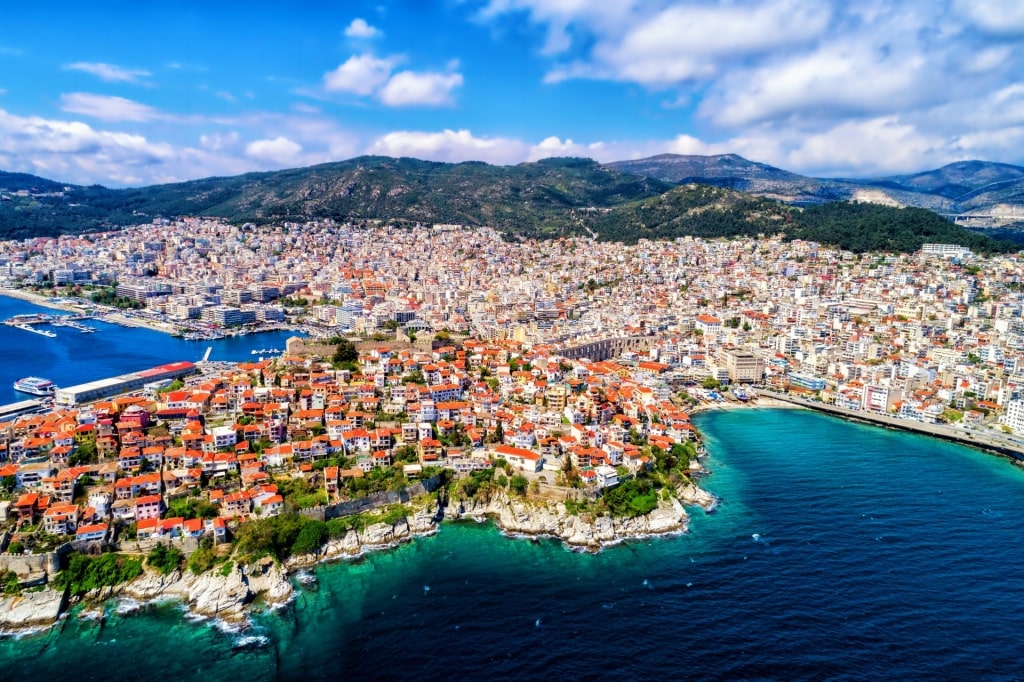
Kavala
The capital of Eastern Macedonia and just 100 miles from the border with Turkey, Kavala is one of the most underrated cities in Greece.
Built on a hill overlooking the northern Aegean, the city has had a varied history, passing hands several times until finally becoming part of modern Greece in the 1920s. The central Old Town has a mixture of medieval, traditional Macedonian and Ottoman architecture alongside pretty gardens and squares.
Sights worth noting include the 15th-century Greek castle, Khalil Bey mosque, and the city’s landmark aqueduct. Known as Kamares, it has 60 arches and stands 80 feet above the city.
Old Town, Corfu
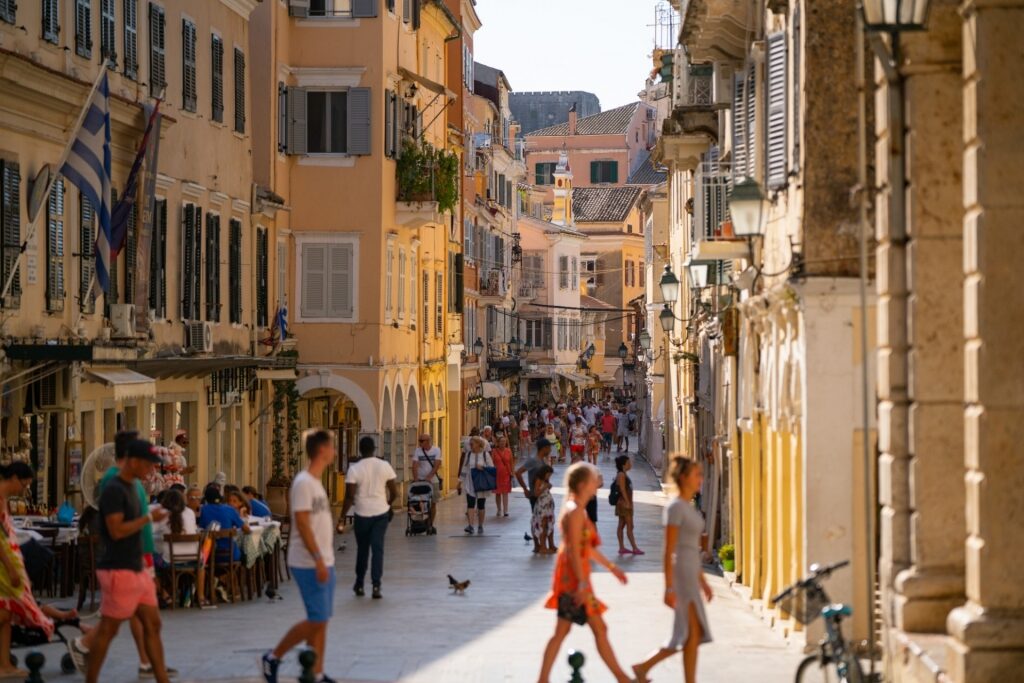
Old Town, Corfu
The jewel of the Ionian, Corfu is known for its fine beaches, but also for its Old Town capital where there’s a heady mix of Greek, French Venetian and British cultures, thanks to the island’s changing status over the years.
Byzantine churches, pastel-tinged mansions and epic forts dominate the landscape. Visitors can explore medieval history in the town’s two castles, get lost in the winding streets of Campiello (the heart of Corfu Town), or explore the buzzing Jewish quarter.
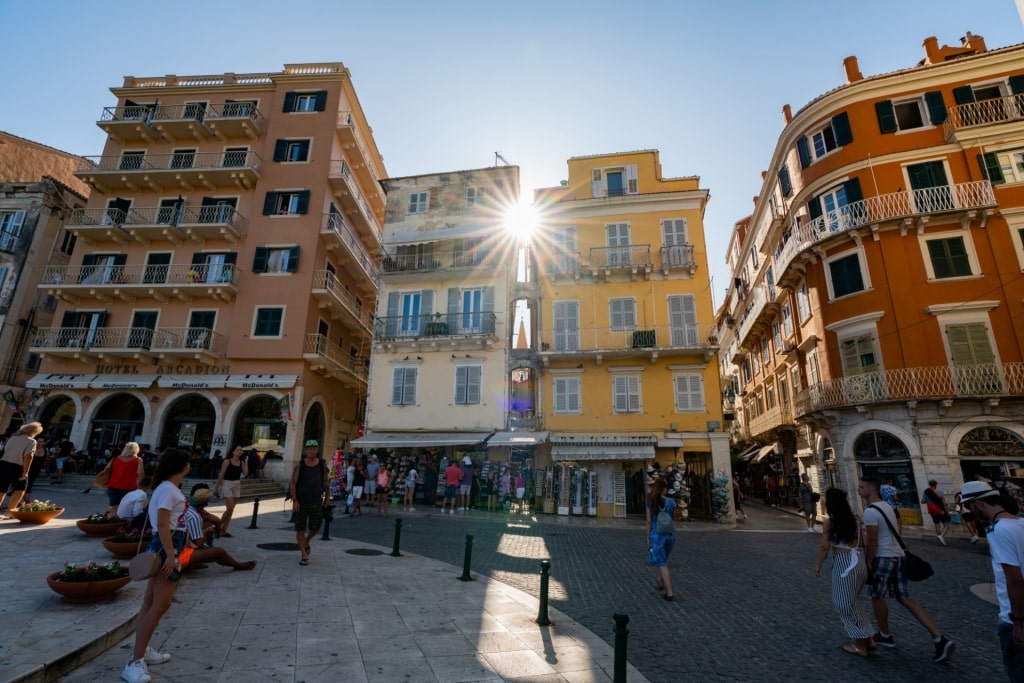
Old Town, Corfu
For a true sample of Corfiot life, take a stroll around the Spianada, Greece’s largest public square. Watch cricket matches on the green while sipping on an ice-cold tsitsibira, the local version of ginger beer. Both are a legacy of British rule in the 19th century.
Corinth
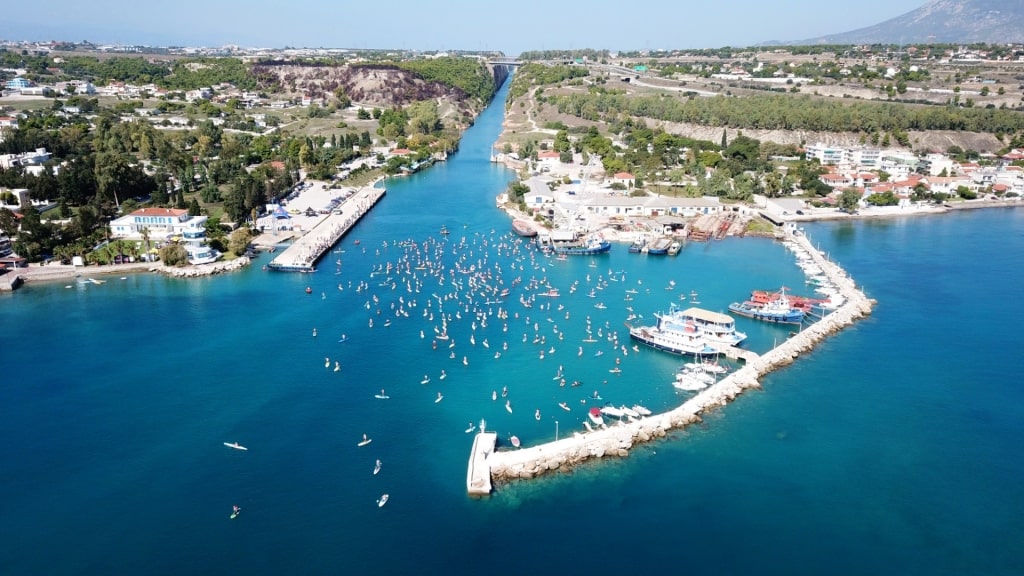
Corinth
A popular day trip from Athens is the bustling town of Corinth (or Corinthos), the gateway to the sprawling Peloponnese peninsula that makes up the vast majority of Greece’s southern mainland.
The surrounding region has been inhabited since 6000 BC but the city has a modern grid layout, making it easy to navigate. The south-north streets lead to a vast seafront promenade with parks, gardens, and places to sit and eat or drink al fresco.
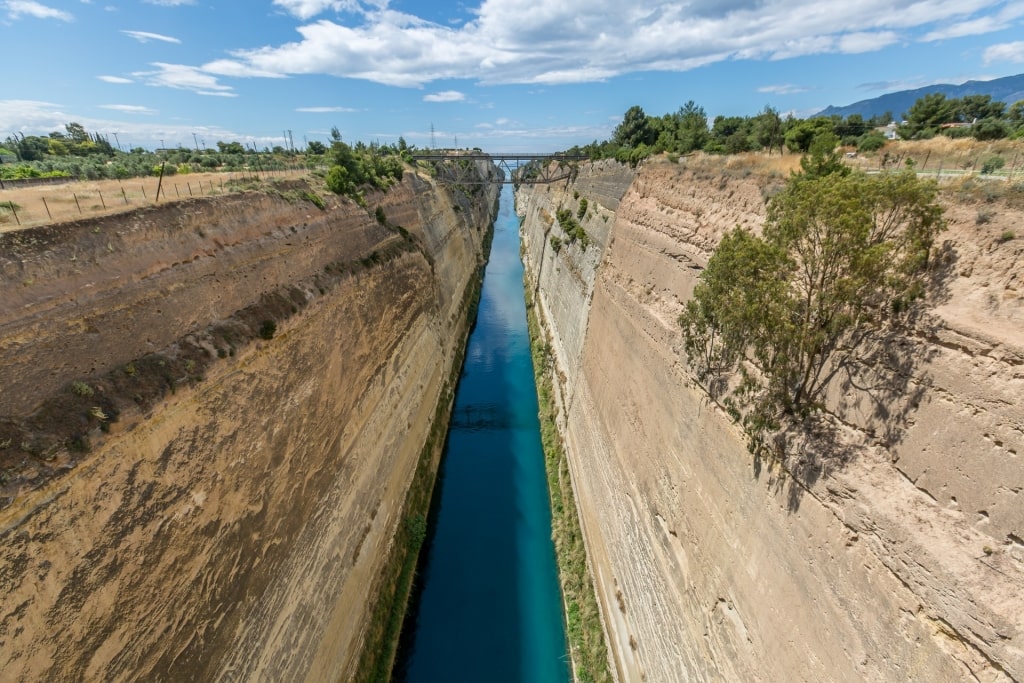
Corinth Canal
Just outside the city lies the Corinth Canal, a fine example of 19th-century ingenuity. This deep trench was dug by hand to stop ships having to navigate around the entire Peloponnese. Visitors can marvel at the boats below from a suspension bridge, while adrenaline seekers take a bungee from the girders.
There are two amazing ancient Greek ruins here too: Ancient Corinth, around five miles from town, and Acrocorinth, a castle sitting atop a monolithic rock with excellent views of the surroundings.
Xanthi
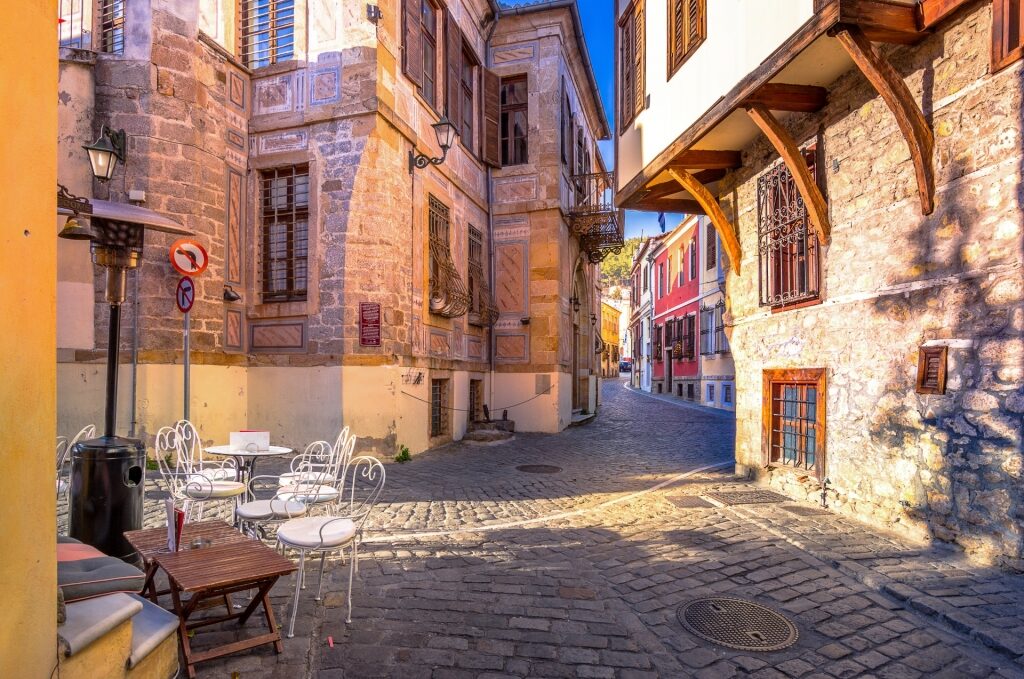
Xanthi
Also close to the Turkish border, Xanthi’s nicknames of “the noble lady of Thrace” and “the city of a thousand colors” are well earned.
Xanthi is built on the banks of the Kosynthos River and the cobbled streets of the Old Town are made for exploring, lined as they are with neoclassical mansions, Byzantine churches and Ottoman-era mosques.
Highlights include the Folk Art Museum, Natural History Museum, and ancient ruins at Avdera, as well as Antika Square, a great spot for people-watching from the cafés and bars.
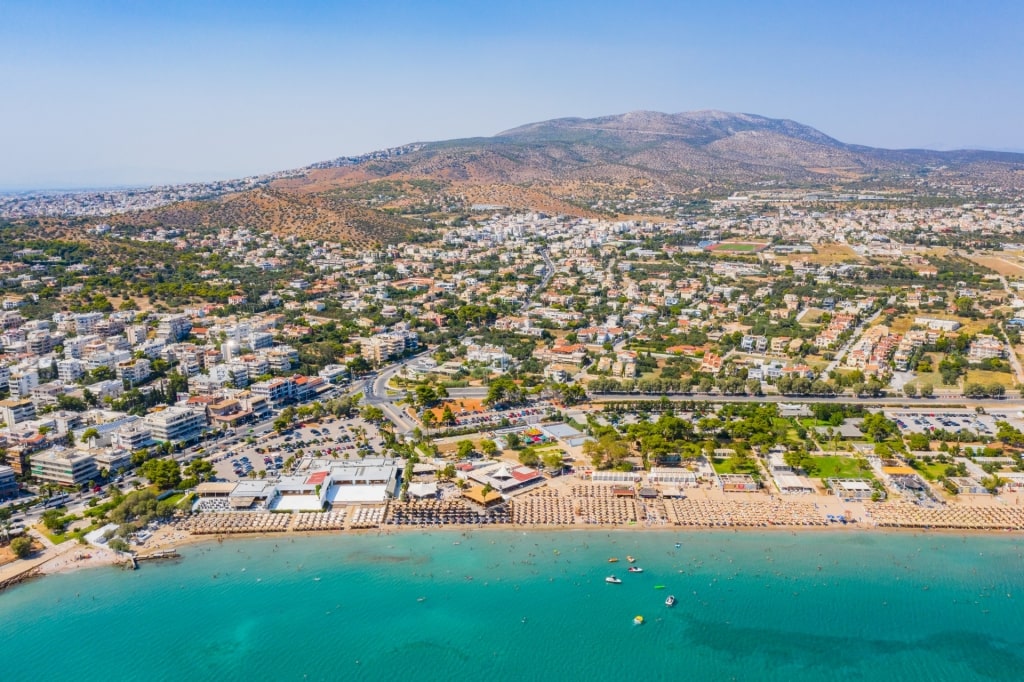
Athens
From quaint island capitals to vibrant metropolises, discover your next Greek city adventure with Celebrity Cruises. Browse our Greece cruises and plan your Aegean odyssey.
